The Connection Between Buildings and Greenhouse Gas Emissions
An introduction to the role commercial buildings play in Illinois’s climate emissions
In Illinois, the building sector contributes 30% of statewide greenhouse gas (GHG) emissions. However, this figure understates the full impact of the built environment. Buildings become the largest emitting sector in Illinois when accounting for both direct emissions and electricity use, responsible for 70.4 million metric tons of carbon dioxide (Figure1). This represents a 67% increase from direct emissions alone and accounts for 73% of the state's electricity use. GHGs, including various heat-trapping gases, accumulate in the atmosphere, raising global temperatures and driving climate change. Meeting the ambitious targets outlined in the Climate and Equitable Jobs Act (CEJA) requires a focused effort on improving building performance.
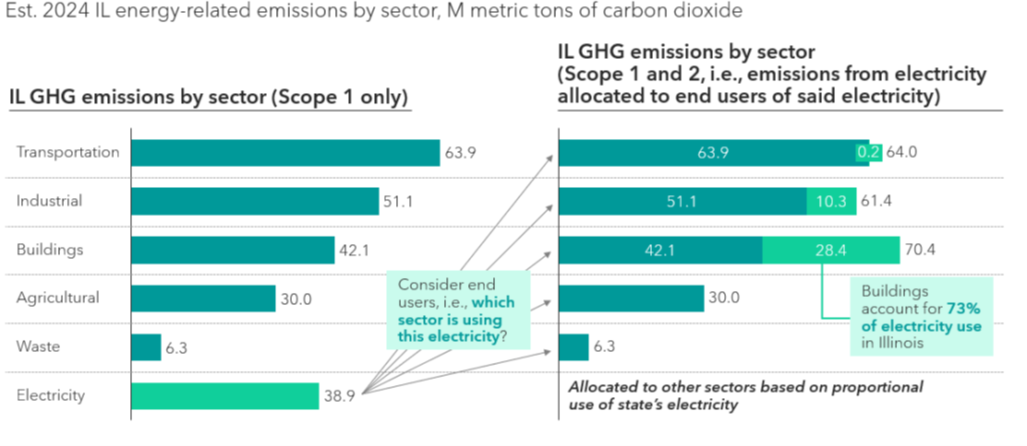
The Illinois EPA developed the State of Illinois Priority Climate Action Plan in 2024 to complement CEJA, establishing clear steps and incentives for building decarbonization. The Plan identifies the building and transportation sectors as the primary areas for achievable and economically viable emissions reductions, and aims to reduce building energy use by 33% by 2050. These reductions also deliver meaningful benefits to disadvantaged communities, aligning with Illinois’ goals for equity and sustainability.
To better understand GHG emissions and how buildings and their operations contribute to those emissions, this resource will explain:
- How emissions are characterized
- How much GHG emissions are associated with a building in the state
- Ways to measure and target lower emissions for your building
In general, building GHG emissions are lower when the building’s energy use is lower, but a building with lower energy use could still produce significant GHG emissions if, for example, there is a lot of on-site combustion. Building owners need to do their part to understand the impacts of their decisions not only for compliance with Illinois’s policies in the near term, but also the long-term impacts of emissions on the climate, economy, and society.
How are building emissions characterized?
The Greenhouse Gas Protocol, an organization that provides a standard framework and tools for measuring emissions, defines emissions as either direct or indirect.
- Direct GHG emissions are from sources that are owned or controlled by the reporting entity.
- Indirect GHG emissions are a consequence of the activities of the reporting entity but occur at sources owned or controlled by another entity.
Additionally, GHG emissions are typically characterized by their “scope” or category. There are three scopes: 1, 2, and 3.
| Scope | Emissions type | Common building uses in this scope |
|---|---|---|
| Scope 1 | Direct GHG emissions | On-site fuel combustion (e.g. gas used on site for cooking, water heating, and/or space heating) and refrigerant leaks |
| Scope 2 | Indirect GHG emissions | Emissions from purchased electricity from the grid (i.e. usage on an electricity bill) and other centralized energy sources (e.g. steam) |
| Scope 3 | Other indirect GHG emissions | Material extraction and production, waste disposal, commuting and travel, water consumption and disposal, and many others |
Ongoing building energy consumption, and what Illinois is addressing in its green building and climate goals, generally falls within Scopes 1 and 2. Those focused on the embodied carbon emissions of products, building materials, and construction processes, are becoming a higher priority for the building industry to address.
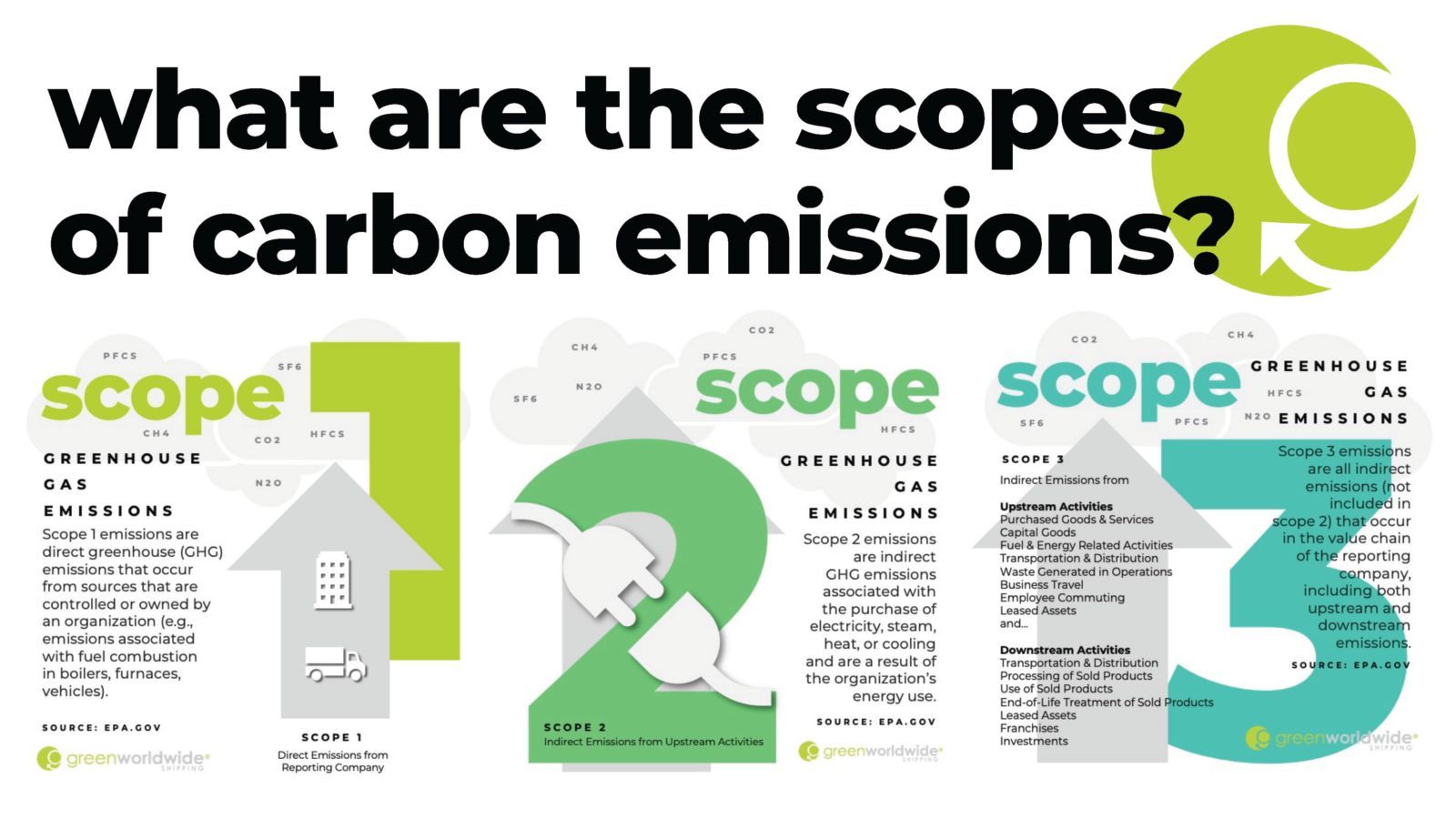
Calculating Building Emissions
GHG emissions are not directly measured in buildings through a meter in the same way water and electricity are. Rather, emissions are estimated based on how much electricity, gas, and other fuels a building consumes.
Scope 1 emissions
Gas combustion in the building, which can occur in a boiler, furnace, or in cooking appliances, emits GHGs directly at the site (Scope 1 emissions) as a byproduct of combustion.
In most cases, calculating Scope 1 emissions can be as simple as looking at gas consumption values on utility bills. Inputting this information into ENERGY STAR® Portfolio Manager, the platform currently required by Chicago, Evanston, and Oak Park for large buildings to report their annual benchmarking data, will automatically create an output to see a building’s GHG emissions.

Building owners have the greatest level of control over their Scope 1 emissions. To reduce Scope 1 emissions, owners can and should plan to change out gas and fossil fuel-burning equipment like water heaters, furnaces, space heaters, and ovens and cooktops with their electric counterparts at end of life.
Scope 2 emissions
For grid-level electricity consumption (Scope 2 emissions), calculating emissions is more complicated. Because electricity comes indirectly from multiple generating sources, such as natural gas, biomass, and solar, the associated GHG emissions from electricity consumption varies substantially depending on the building’s location, the time of day, and the time of year. The emissions intensity of grid-delivered electricity is changing, however, due to increased deployment of renewable energy and natural gas, and the decline of coal-fired power plants in the region (see U.S. Energy Information Administration FAQs for details). In particular, Illinois will plan for cost-effective retrofit of local and state government buildings, public universities, and municipalities to reduce energy consumption by 35% by 2035, achieve zero emissions, and support the electrification of transport.
You can approximate your building’s Scope 2 emissions using ENERGY STAR® Portfolio Manager. Once you enter building-specific data, the output includes information about a building’s estimated total GHG emissions and total GHG emissions intensity (the amount of emissions generated per square foot). The platform pulls in grid information for the region, which is how it estimates a building’s Scope 2 emissions. This is a useful tool to track energy use and emissions trends over time.
The emissions outputs generated by ENERGY STAR® Portfolio Manager should be used as a starting point to understand Scope 2 emissions, but other tools provide higher levels of accuracy and allow your company to set meaningful goals for emissions reduction. Two industry standard resources are the GHG Protocol’s Corporate Accounting and Reporting Standard, which provides businesses guidance on GHG emissions inventory, and Scope 2 Guidance which can assist in setting corporate standards.

Building owners are not in control of grid emissions but can curb their Scope 2 emissions by reducing their overall electric consumption through efficiency upgrades, installing on-site renewable energy, or purchasing off-site green power via Power Purchase Agreements or Renewable Energy Credits (RECs).
Scope 3 emissions
Scope 3 Emissions, those that come from an organization’s supply chain and business operations, often represents an organization’s largest source of total GHG emissions (see EPA’s Climate Leadership inventory guidance for details). Scope 3 emissions include the embodied carbon that is present throughout the building’s entire lifecycle, spanning from material extraction and processing to building construction, maintenance, and renovation, to the end-of-life stage in which the building is de-constructed or demolished, and disposed of.
When most companies report on their GHG emissions, they are often only required to include information about Scopes 1 and 2. However, as the effects of climate change exacerbate, organizations are beginning to look at their Scope 3 emissions as well to understand the full impact of their operations.

Building owners can factor in Scope 3 emissions by using available tools to make informed choices for material selection or by conducting a whole-building lifecycle assessment.
Architecture 2030 provides a suite of resources and networks to help reduce emissions from the embodied carbon of construction materials.
Setting GHG Emissions Targets
Given that buildings are responsible for 30% of emissions in Illinois, setting a target to explicitly measure and track Scopes 1 and 2 emissions is necessary to meaningfully address the climate crisis. Taking action to reduce energy consumption and emissions in buildings today paves the way for a 100% clean energy future and begins to address the unsustainable emissions associated with Illinois's buildings.
There are several options to set a target for your building’s greenhouse gas impact. Reducing your building’s emissions over time is primarily a matter of combining energy efficiency upgrades and electrification of all appliances and systems. You can set emissions targets as:
- Total emissions limit (lbs CO2/sq. ft. per year)
- Energy reduction targets over time (e.g. percent better each year)
- Switching to high-efficiency electric appliances (e.g. heat pump water heaters) to reduce Scope 1 and Scope 2 Emissions
- Set a Science-Based Target that aligns GHG emissions reduction targets with what the latest climate scientists say is necessary to meet the goals of the Paris Agreement.
With a clear goal in place and a time-frame in which to reach your goal, tracking progress toward goals is critical. Reducing your energy consumption not only saves GHG emissions, but also reduces energy costs, improves air quality, and creates job opportunities for renewable energy installations and energy efficiency projects.
Key Takeaways
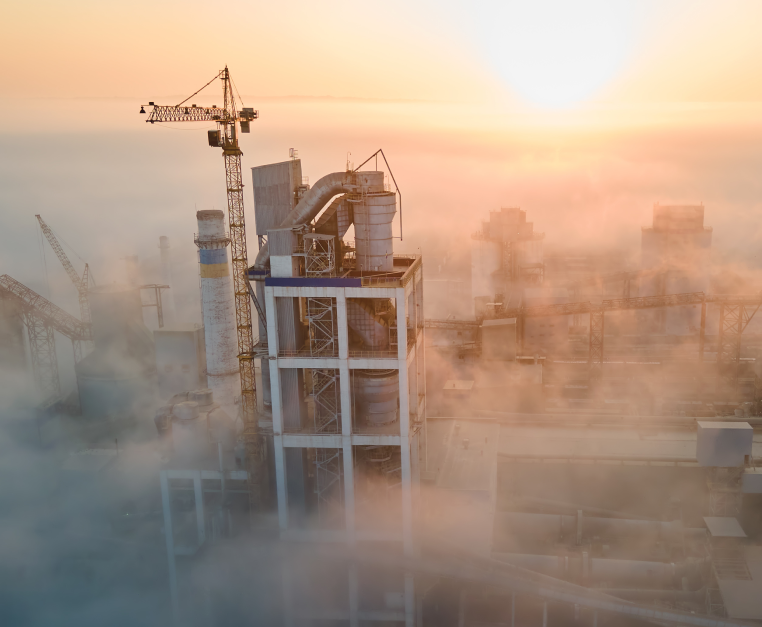
1.
Emissions are characterized in various ways and occur throughout the whole life of a building.
2.
Emissions come not only from energy use, but also from material manufacture, transportation, building construction, renovations, refrigerants, and a building’s end-of-life stage.
3.
Regulations achieve emissions savings in part by reducing energy consumption in buildings.
4.
5.
Setting targets for energy consumption in existing buildings leads to fewer emissions.
Consider
low-embodied carbon materials
when renovating or expanding existing buildings.
This material is based upon work supported by the U.S. Department of Energy’s Office of Energy Efficiency and Renewable Energy (EERE) under the Building Technologies Office Award Number DE-EE0010930. (DOE-ELEVATE-0010930-9)

